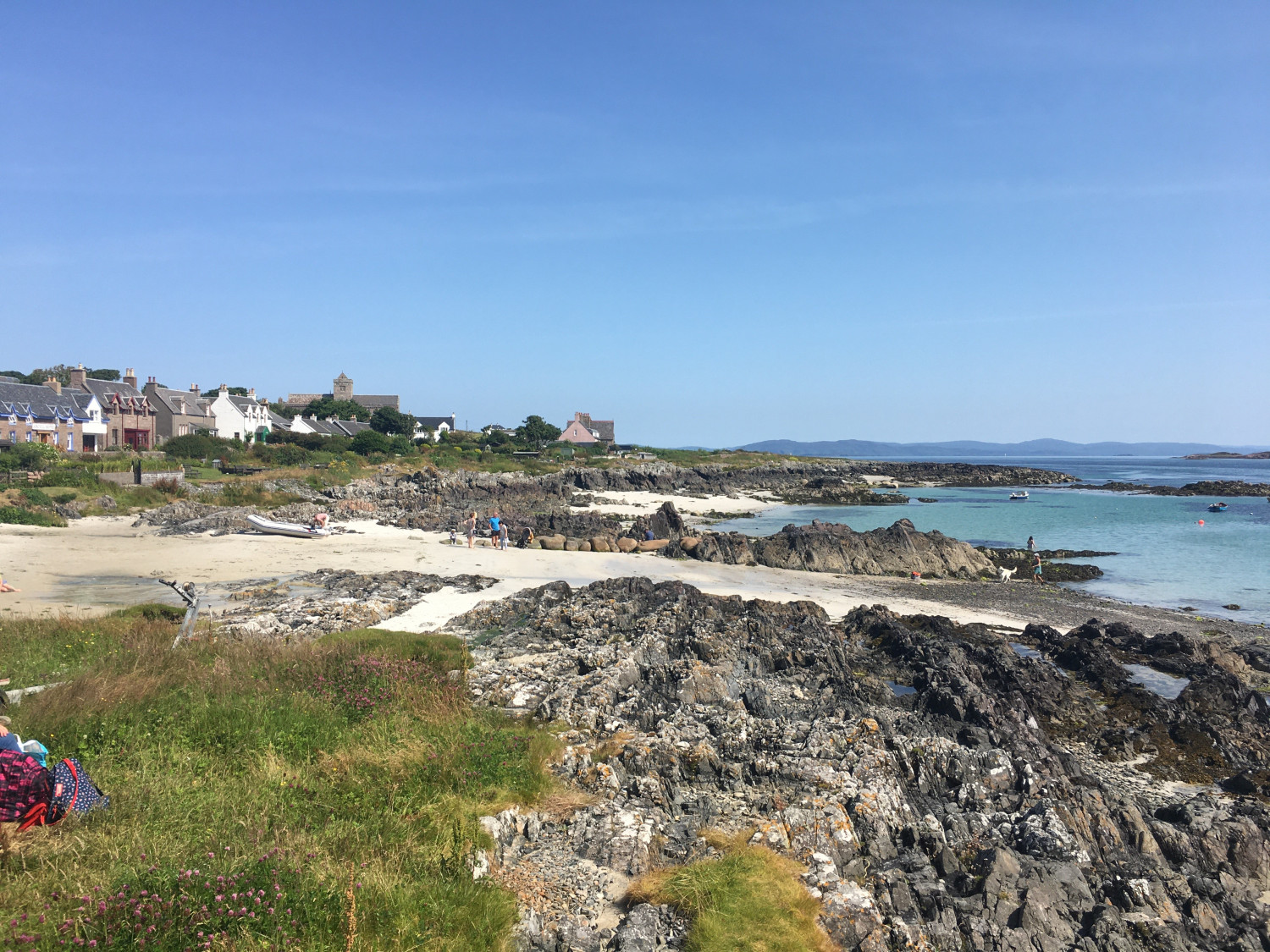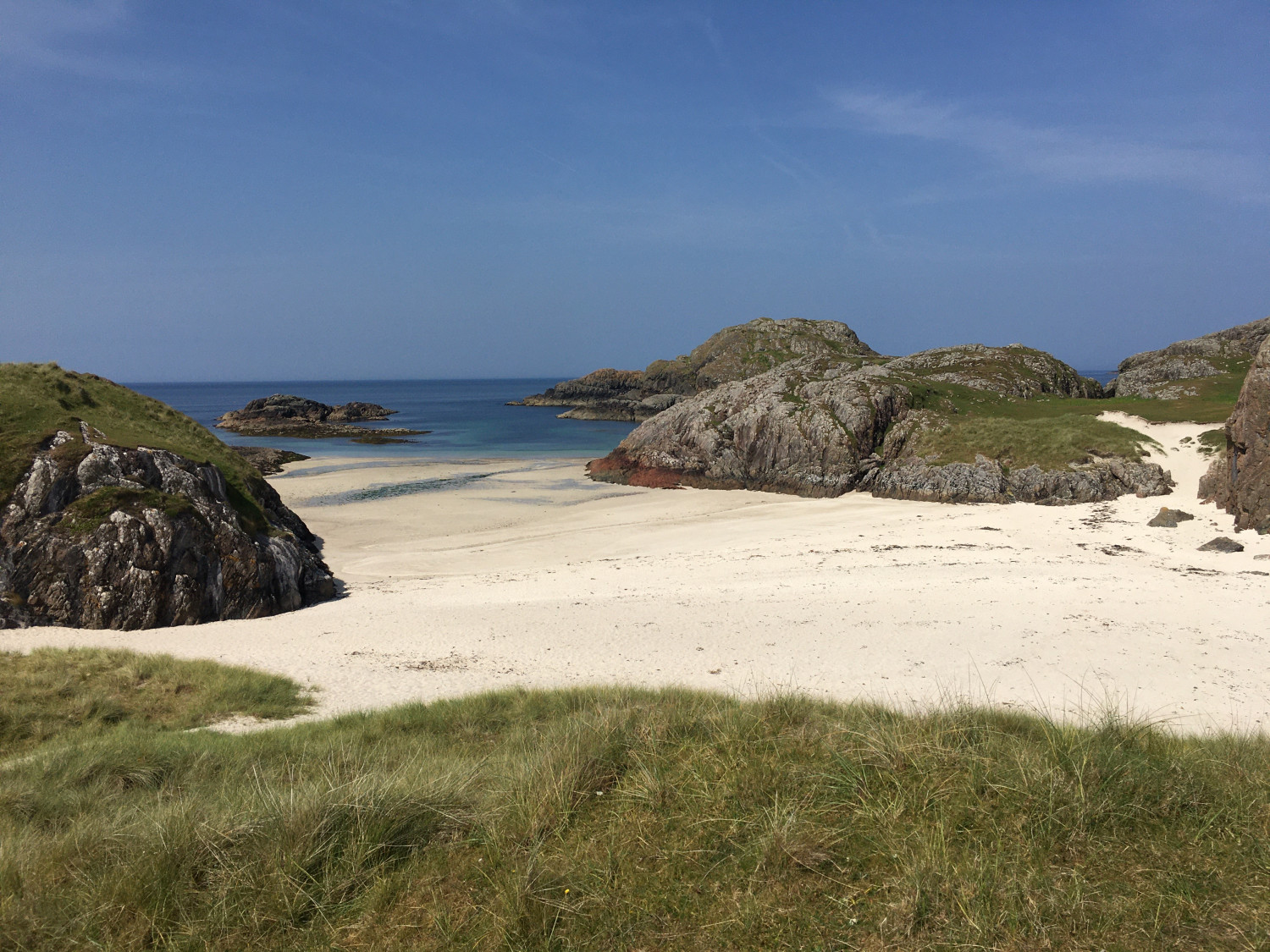
By Canon Alan Hughes, Sheriff of Berwick
Our spiritual home is the little Island of Iona, where my wife and I had our honeymoon over 50 years ago just off the south western tip of Scotland’s west coast Island of Mull.
Visitors and pilgrims travel by road or rail to Oban, take a 40 minute ferry crossing to Mull then drive 40miles to the short ferry crossing to Iona. Whenever we are missing Iona we only have to look out of our Berwick bedroom window and over to Holy Island to feel connected, as the spiritual community at Lindisfarne was founded in the year 635AD by St Aidan, one of the monks from our beloved Iona.
 A fellow guest at our honeymoon hotel was Sister Joyce, an Anglican nun who led a community caring for elderly folk at Belper in Derbyshire, she called them 'our treasures'. She was accompanying one of her 'treasures' making a pilgrimage to Iona to aid recovery from illness. One day Susan and I made the challenging journey to the southern tip of Iona, where Columba first landed. We collected a handful of small distinctive green marble pebbles, returning to the hotel and showing them to Joyce, she asked if she could have them and I handed them over with reluctance. Some time later a parcel arrived containing an embroidered Iona Cross, with each pebble stitched on by Joyce, it has remained in my study ever since.
A fellow guest at our honeymoon hotel was Sister Joyce, an Anglican nun who led a community caring for elderly folk at Belper in Derbyshire, she called them 'our treasures'. She was accompanying one of her 'treasures' making a pilgrimage to Iona to aid recovery from illness. One day Susan and I made the challenging journey to the southern tip of Iona, where Columba first landed. We collected a handful of small distinctive green marble pebbles, returning to the hotel and showing them to Joyce, she asked if she could have them and I handed them over with reluctance. Some time later a parcel arrived containing an embroidered Iona Cross, with each pebble stitched on by Joyce, it has remained in my study ever since.
The rocks of Iona were formed around the South Atlantic at the beginning of time, the earth’s plates gradually moving them north to where the Hebrides are today. They are the oldest stones in creation, no fossils, formed before life began, around throughout every human experience. Thanks to Joyce’s gift, we have given them with a prayer to folk undertaking life changing challenges.
No one knows for certain when Christianity was first brought to the British Isles, possibly by way of Roman merchant ships. We do know for certain that St Columba brought Celtic Christianity to Iona from Ireland in 563AD and St Augustine, Roman Christianity to Kent in 597AD. The decision which should hold sway over Northumbria was made by Oswald after winning the Battle of Heavenfield near Hexham in 634AD, declaring himself to be a Celtic Christian King. After the battle, as he settled into ruling his Kingdom of Northumbria, Oswald sent to Iona for missionaries, for the long years of pagan domination had virtually wiped out all traces of Christianity.
Aidan came with a few brother monks and settled on Lindisfarne, close to Oswald's seat of power at Bamburgh so beginning a long partnership, Church and secular powers working for the common good in practical as well as spiritual ways.
The Venerable Bede, 7th century monk and historian described Aidan as 'a bishop inspired with a passionate love of goodness, gentle and moderate'
Oswald, remembered as a King whose faith grew as he ruled, was devoted to Aidan, travelling with him on his missionary journeys. Aidan spoke only Gaelic and Northumbrians a form of Old English, Oswald was fluent in both and so acted as Aidan’s interpreter.
Only God knows why, but their partnership was overwhelmed by evil in the form of Penda, King of Mercia in the year 642AD. It is said that Oswald prayed for his people as he died 'My God, save their souls'.
Oswald’s body was dismembered, his head taken to Aidan at Lindisfarne who then carried his friend’s head in his own hands and placed it in the Royal Chapel at Bamburgh. It was eventually put into St Cuthbert's coffin in 875AD and documented as being there when the coffin was opened at Durham in 1827.
Oswald also had an Abbey built at Whitby in 658AD and, ironically, it was there that Abbess Hilda presided over a council in 664AD which decided that Roman Christianity was to be the form recognised throughout England and Celtic Saints be banished to the north. It is only in recent times that folk have begun to rediscover the Celtic faith, helped in no small measure by the writings of the late David Adam, Vicar of Holy Island.
The priory which still stands on Holy Island and the abbey on Iona both date from around the 12th Century. The original monastic cells and later churches founded by Columba and Aidan and their successors were both destroyed in successive Viking raids. The monks on Lindisfarne returned from their refuge at Durham after the Vikings either moved on or settled in a less aggressive manner, equally the monks of Iona eventually returned from their refuge in Ireland. Thankfully the two great treasures from the linked communities survive largely intact to this day, The Book of Kells and The Lindisfarne Gospels.
Dr Samuel Johnson (1709-84) was once described as ‘arguably the most distinguished man of letters in English History’. He made a journey to the Scottish Highlands and Western Isles and called at Iona, travelling by horse, sail and rowing boat. The tradition on Iona was that visitors would be carried ashore by the women of the island. Johnson records that, after being shouldered ashore, he was led to the ruins of the abbey where cattle grazed. There he prayed his famous prayer 'that Iona will once again become the instructress of the western world' and today the Iona community works hard to give substance to his prayer in the restored abbey. Johnson later wrote: “That man is little to be envied, whose patriotism would not gain force upon the plain of Marathon, or whose piety would not grow warmer among the ruins of Iona.”
We often take for granted all that surrounds us. Some say that many living in Edinburgh have never visited their famous castle, some Berwickers may not have ventured to Holy Island. If this is true, I certainly hope that these few words may encourage more to visit Iona and Lindisfarne. Iona Abbey is in the care of Historic Scotland, Lindisfarne Priory in the care of English Heritage.